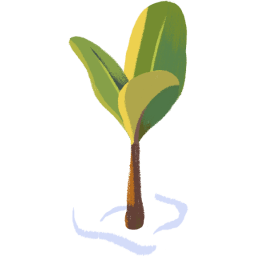As an Italian photographer who has documented life in The Bahamas for the past 13 years, I’ve come to understand that, directly or indirectly, the sea is the main source of income for this island nation.
Despite this, not all voices are equally heard when discussing how marine ecosystems and fisheries should be managed and how conservation initiatives affect all stakeholders of the sea, whether for the positive or negative. Because of this, I now offer you Bahamian fishers’ perspectives as told through my lens.
Fishing in The Bahamas is like catching the subway in New York City—nearly everyone does it.
However, it’s the commercial fishing sector that plays a major role in the Bahamian economy, generating some $80 million annually—and with such revenue come many regulations.
Another fisherman, Captain James Munroe from Eleuthera, believes in the importance of communicating, working together, and trying to address what he considers to be the main problem: poachers.
Amidst these growing concerns, in December 2020, the controversial Fisheries Bill passed unanimously in parliament, making fishing an industry reserved only for Bahamian citizens. Enforcing protections and legislation over the 90,000 square miles of aqua ocean that surrounds The Bahamas is no easy feat, and will take vigilance on the part of the government as well as conservation watchdogs who can alert authorities quickly if poachers show up.
On one of my recent trips to the Exumas, I met and photographed a true island character, 87-year-old Steven Cox, who has an in-depth knowledge of the Exuma Cays Land and Sea Park. Cox has seen much from his decades on a small cay within the park, and he holds the only license to fish (for meals only) within those waters as he was there before the park was founded. These days, he is mostly found at home recounting stories of the sea, tending his vegetable patch, or picking papayas from his garden.
The Exuma Cays Land and Sea Park was established in 1958 as the world’s first land and sea park. A breathtaking place of beauty, the park prohibits extraction of any marine life, and these safeguards have allowed populations of Nassau grouper, queen conch, spiny lobster, and various fish to flourish over the decades within the healthiest coral reefs in The Bahamas.
Such compelling characters span the breadth of the islands. Morgan Bower, the daughter of a longtime friend, is a young Bahamian with a keen interest in marine conservation. She is currently working as a diver in Abaco for IDEA Relief, a disaster relief organization helping to remove the debris caused by Hurricane Dorian.
Despite new generations and the majority of people understanding the importance of respecting the oceans, there are still many who don’t. Last winter I had a shocking experience that elucidates this.
But for every negative example, there are more positive ones. Fisherman Joel Robertson is one such example. Robertson is a stone crab fisherman and has been fishing the Grand Bahama banks for over 30 years (but only recently did he get his own boat).
It was church that eventually gave Roberston his deep love of nature. His mission soon became to be one with the ocean, fishing with respect and advocating for sustainable and ethical fishing throughout the world.
Robertson explains to many of his crab fisher colleagues to strictly follow the Bahamian fishing laws and adopt all measures not to destroy the crab population, which serve the very important role of cleaning the ocean’s bottom and keeping it healthy.
It’s clear that life on this planet fully depends on the oceans. In The Bahamas this is especially true—from recreation, to livelihood, to perseverance.
The bond I’ve seen between the Bahamian people and the sea is so essential: economically, culturally, even spiritually. The future of these waters depends on collaboration amongst its stakeholders—and listening to all the voices that represent them.







































